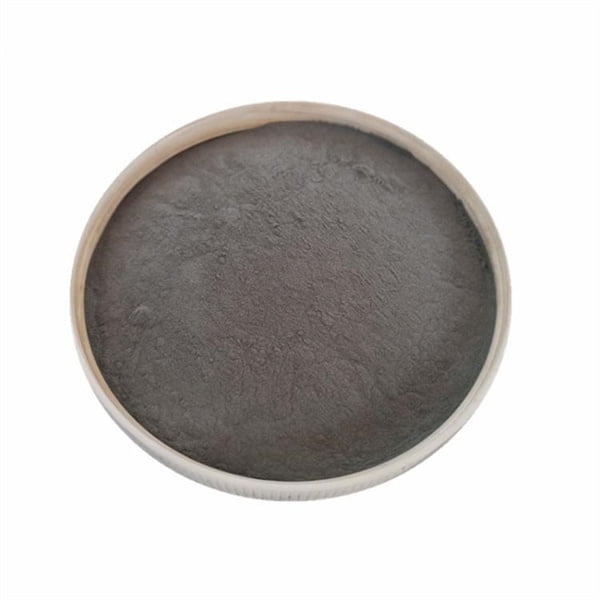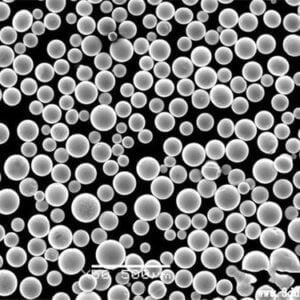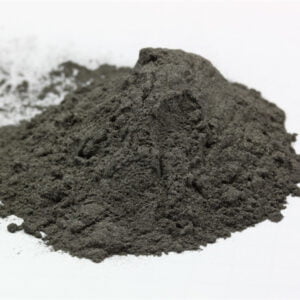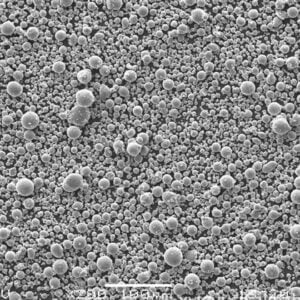317L Powder
317L powder is an austenitic stainless steel powder containing 18% chromium, 3% molybdenum, and 0.08% carbon. It offers an excellent combination of corrosion resistance, strength, weldability and cost.
Low MOQ
Provide low minimum order quantity to meet different needs.
OEM & ODM
Provide customized products and design services to meet unique customer needs.
Adequate Stock
Ensure fast order processing and provide reliable and efficient service.
Customer Satisfaction
Provide high quality products with customer satisfaction at the core.
share this product
Table of Contents
Overview of 317L Powder
317L powder is an austenitic stainless steel powder containing 18% chromium, 3% molybdenum, and 0.08% carbon. It offers an excellent combination of corrosion resistance, strength, weldability and cost.
Key properties and advantages of 317L powder include:
317L Powder Properties and Characteristics
| Properties | Details |
|---|---|
| Composition | Fe-18Cr-3Mo-0.08C alloy |
| Density | 8.0 g/cc |
| Particle shape | Irregular, angular |
| Size range | 10-150 microns |
| Apparent density | Up to 50% of true density |
| Flowability | Moderate |
| Corrosion resistance | Excellent in many environments |
| Strengthening | Cold working and solid solution strengthening |
317L powder is widely used in chemical processing, marine applications, pulp and paper industry, nuclear power generation, and architectural features needing weathering resistance.
317L Powder Composition
Typical composition of 317L stainless steel powder:
317L Powder Composition
| Element | Weight % |
|---|---|
| Iron (Fe) | Balance |
| Chromium (Cr) | 17-19% |
| Nickel (Ni) | 11-15% |
| Molybdenum (Mo) | 2.5-3.5% |
| Manganese (Mn) | <2% |
| Carbon (C) | 0.08% max |
| Silicon (Si) | 1% max |
| Nitrogen (N) | 0.10% max |
| Sulfur (S) | 0.03% max |
- Iron provides the ferritic matrix and ductility
- Chromium enhances corrosion and oxidation resistance
- Nickel stabilizes the austenitic structure
- Molybdenum further improves pitting resistance
- Carbon, nitrogen and sulfur controlled as tramp elements
The composition provides an excellent balance of corrosion resistance, formability, weldability and cost.

317L Powder Physical Properties
317L Powder Physical Properties
| Property | Values |
|---|---|
| Density | 8.0 g/cc |
| Melting point | 1370-1400°C |
| Electrical resistivity | 0.8 μΩ-m |
| Thermal conductivity | 16 W/mK |
| Thermal expansion | 16 x 10^-6 /K |
| Maximum service temperature | 900°C |
- High density compared to ferritic stainless steels
- Maintains strength and corrosion resistance at elevated temperatures
- Resistivity higher than pure iron or carbon steels
- Lower thermal conductivity than carbon steel
- Can withstand continuous service up to 900°C
The physical properties make 317L suitable for high temperature applications requiring corrosion resistance.
317L Powder Mechanical Properties
317L Powder Mechanical Properties
| Property | Values |
|---|---|
| Tensile strength | 515-620 MPa |
| Yield strength | 205-275 MPa |
| Elongation | 40-50% |
| Hardness | 88-95 HRB |
| Impact strength | 100-150 J |
| Modulus of elasticity | 190-210 GPa |
- Excellent combination of strength and ductility
- Can be work hardened significantly to increase strength
- Very high toughness and impact strength
- Strength can be further improved through cold working
- Hardness is relatively low in annealed condition
The properties provide an excellent balance of strength, ductility and toughness required for many corrosive environments.
317L Powder Applications
Typical applications of 317L stainless steel powder include:
317L Powder Applications
| Industry | Example Uses |
|---|---|
| Chemical | Tanks, valves, pipes, pumps |
| Petrochemical | Process equipment, tubing, valves |
| Marine | Propeller shafts, fasteners, deck hardware |
| Nuclear | Reactor vessels, fuel element cladding |
| Architectural | Railings, wall panels, roofing |
Some specific product uses:
- Pollution control equipment handling hot acids
- Nuclear reactor internal structures
- Marine propeller shafts, deck fittings
- Pulp and paper industry piping, valves
- Architectural paneling, roofing, cladding
Its excellent corrosion resistance combined with good manufacturability make 317L widely used across demanding industries.
317L Powder Specifications
Relevant specifications and standards:
317L Powder Standards
| Standard | Description |
|---|---|
| ASTM A276 | Standard for stainless steel bars and shapes |
| ASTM A479 | Standard for stainless steel tubing |
| AMS 5524 | Annealed stainless steel bar, wire, forgings |
| ASME SA-276 | Specification for stainless steel bars and shapes |
| AISI 630 | Standard for 17Cr-4Ni precipitation hardening stainless steel |
These standards define:
- Chemical composition limits of 317L alloy
- Permissible impurity levels like S, P
- Required mechanical properties
- Approved production methods
- Compliance testing protocols
- Proper packaging, labeling and documentation
Meeting certification requirements ensures suitability of the powder for the intended applications.
317L Powder Particle Sizes
317L Powder Particle Size Distribution
| Particle Size | Characteristics |
|---|---|
| 10-45 microns | Ultrafine grade for high density and surface finish |
| 45-150 microns | Coarse grade provides good flowability |
| 15-150 microns | Standard grade for pressing and sintering |
- Finer particles allow greater densification during sintering
- Coarser powder flows better and fills die cavities uniformly
- Size range is tailored based on final part properties needed
- Both gas and water atomized powders are available
Controlling particle size distribution allows optimizing processing behavior and final part performance.
317L Powder Apparent Density
317L Powder Apparent Density
| Apparent Density | Details |
|---|---|
| Up to 50% of true density | For irregular powder morphology |
| 4.5-5.5 g/cc typical | Improves with greater packing density |
- Higher apparent density improves powder flow and compressibility
- Irregular morphology limits maximum packing density
- Values up to 60% are possible with spherical powder
- High apparent density improves press filling efficiency
Higher apparent density leads to better manufacturing productivity and part quality.
317L Powder Production Method
317L Powder Production
| Method | Details |
|---|---|
| Gas atomization | High pressure inert gas breaks molten metal stream into fine droplets |
| Water atomization | High pressure water jet breaks metal into fine particles |
| Vacuum induction melting | High purity input materials melted under vacuum |
| Multiple remelting | Improves chemical homogenization |
| Sieving | Classifies powder into different particle size ranges |
- Gas atomization provides clean, spherical powder morphology
- Water atomization is a lower cost process with irregular particles
- Vacuum melting and remelting minimizes gaseous impurities
- Post-processing allows customization of particle sizes
Automated production and stringent quality control result in consistent powder suitable for critical applications.
317L Powder Pricing
317L Powder Pricing
| Factor | Impact on Price |
|---|---|
| Purity level | Higher purity increases cost |
| Powder morphology | Spherical powder costs more than irregular |
| Particle size | Ultrafine powder more expensive |
| Order volume | Larger quantities have lower per unit pricing |
| Additional services | Customization adds cost |
Indicative Pricing
- Irregular 317L powder: $6-10 per kg
- Spherical 317L powder: $10-15 per kg
- Large volume pricing can be 30-50% lower
Pricing depends on purity, particle characteristics, order volume, and customization needs.
317L Powder Suppliers
317L Powder Suppliers
| Company | Location |
|---|---|
| Höganäs | Sweden |
| Sandvik | Germany |
| CNPC Powder | China |
| Carpenter Powder Products | USA |
| Erasteel | France |
| Daido Steel | Japan |
Key supplier selection factors:
- Powder grades offered
- Production capacity
- Particle morphology and size ranges
- Batch analysis reports
- Pricing and minimum order quantity
- Customization services
- Delivery times and reliability
317L Powder Handling and Storage
317L Powder Handling
| Recommendation | Reason |
|---|---|
| Use PPE and ventilation | Avoid exposure to fine metallic particles |
| Ensure proper grounding | Prevent static discharge while handling |
| Avoid ignition sources | Powder can combust in oxygen atmosphere |
| Use non-sparking tools | Prevent possibility of ignition |
| Follow safety protocols | Reduce risk of burns, inhalation, ingestion |
| Store in stable containers | Prevent contamination or oxidation |
As 317L powder is flammable, ignition and explosion risks should be controlled during handling and storage. Otherwise it is relatively safe with proper precautions.
317L Powder Inspection and Testing
317L Powder Testing
| Test | Details |
|---|---|
| Chemical analysis | ICP and XRF verify composition |
| Particle size distribution | Laser diffraction determines size distribution |
| Apparent density | Hall flowmeter test per ASTM B212 standard |
| Powder morphology | SEM imaging shows particle shape |
| Flow rate analysis | Gravity flow rate through specified nozzle |
| Loss on ignition | Determines residual moisture content |
Stringent testing ensures the powder meets the required chemical purity, particle characteristics, density, morphology, and flowability per applicable specifications.
317L Powder Pros and Cons
Advantages of 317L Powder
- Excellent corrosion resistance in many environments
- High temperature strength and oxidation resistance
- Good ductility, toughness and weldability
- More cost-effective than high nickel austenitic grades
- Readily formable using conventional techniques
- Can be work hardened through cold/warm working
Disadvantages of 317L Powder
- Lower high temperature creep strength than some ferritic grades
- Lower hardness and wear resistance than martensitic grades
- Susceptible to chloride stress corrosion cracking
- Requires post weld annealing to prevent sensitization
- Limited cold heading and forming capability
- Surface discoloration over time in outdoor exposure
Comparison With 316L Powder
317L vs 316L Stainless Steel Powder
| Parameter | 317L | 316L |
|---|---|---|
| Density | 8.0 g/cc | 8.0 g/cc |
| Strength | 515-620 MPa | 485-550 MPa |
| Corrosion resistance | Excellent | Outstanding |
| Pitting resistance | Very good | Excellent |
| Cost | Low | High |
| Uses | Process industry, marine | Chemical, pharmaceutical |
- 317L provides higher strength at lower cost
- 316L offers better pitting corrosion resistance
- 317L has good chloride stress corrosion resistance
- 316L preferred for ultra-corrosive environments
- 317L suited for marine applications and nuclear industry
317L Powder FAQs
Q: What are the main applications of 317L stainless steel powder?
A: Main applications include chemical processing, petrochemical, marine, nuclear, pulp & paper, and architectural. It is used for equipment like tanks, valves, pipes, pumps, shafts, and cladding.
Q: What precautions should be taken when handling 317L powder?
A: Recommended precautions include ventilation, grounding, avoiding ignition sources, using non-sparking tools, protective gear, safe storage, and controlling dust exposure.
Q: How does molybdenum improve the corrosion resistance of 317L?
A: Molybdenum enhances pitting and crevice corrosion resistance in chloride environments. It stabilizes the passive film protecting the surface.
Q: What is the main difference between 304L and 317L stainless steel powder?
A: 317L contains 3% molybdenum giving it significantly better corrosion resistance compared to 304L, especially in marine and other chloride environments.
Get Latest Price
About Met3DP
Product Category
HOT SALE
CONTACT US
Any questions? Send us message now! We’ll serve your request with a whole team after receiving your message.

Metal Powders for 3D Printing and Additive Manufacturing
COMPANY
PRODUCT
cONTACT INFO
- Qingdao City, Shandong, China
- [email protected]
- [email protected]
- +86 19116340731













